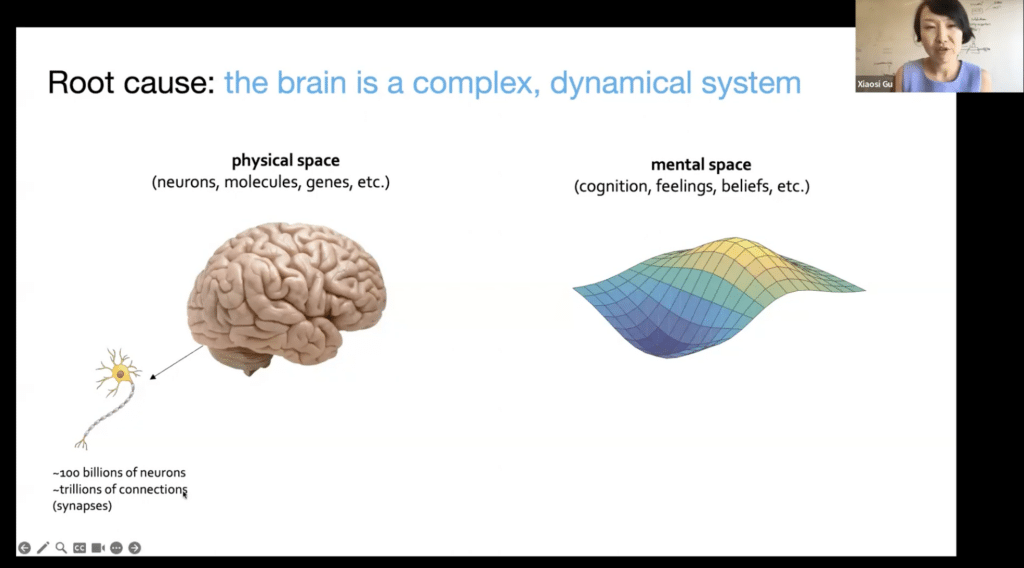Our second keynote for the 2023 Zarrow Mental Health Symposium: New Horizons in Brain Science was Dr. Xiaosi Gu. Dr. Gu’s presentation, entitled Computational Psychiatry: Can AI Solve the Mental Health Crisis? blended decades of extensive research with the emerging and intricate technology of Artificial Intelligence.
Unexpected at the start was her declarative that this would be an inspirational talk. Of course it was infused with statistics and scientifically sourced data. For example, the revelation that today, one in five adults and one in five children are living with a mental illness. She mentioned the annual cost of untreated mental illnesses: $38.5 billion in emergency room care, $37 billion in incarceration and $193.2 billion in lost productivity. But it wasn’t a recitation of stats. It was a delivery with both a cause and effect: the cause being our growing mental health crisis and effect being the deep-within pull to find solutions.
Dr. Gu highlighted the unique challenges that caregivers face in managing mental health challenges, some of which can be stunningly easy to overlook. Diagnostics are often subjective or fuzzy when assessing a mental health condition. Unlike physical health, pinpointing a cause may rely on strictly conversation, forgoing more clear-cut tools like blood tests and EKGs and X-rays. Then there are systemic issues such as significantly more costly out-of-pocket expenses, disparity and stigmatization, all of which can be a hindrance, if not preventative to receiving care.
In examining the landscape of AI and mental health, Dr. Gu married cognitive and behavioral modeling with biophysical modeling to better discuss the enabling of large-scale brain data sharing, identification of common neural substrates, examining new neural dynamics and uncovering deep phenotypes. She honed in on how most commercial AIs do not understand each of us as people. They don’t understand why we make the choices we make, just that we make them.
Scientists are trying to build models that do.
Moving from data-driven AI to theory-driven AI, she mentioned Marr’s Trig-Level of Analysis, a model developed by David Marr. In this model, Mr. Marr was interested in understanding how vision works. He theorized that there are three very important levels to achieving this understanding: computational, algorithmic and implementational. The relevance is in the philosophical and fundamental parallels to talking about managing mental health.
This was the perfect segue into the newest horizons in brain science as she presented case studies that applied the use of AI to treatment.
One of the key takeaways was an important moderation that showed that the more a therapist said “I” the more it affected the patient’s self reporting. Another was the finding that the thalamus mimics subjective belief of an individual, which is to say that belief modulates thalamic activity during decision making. Beliefs are mapped to the brain in an incredibly precise manner.
Dr. Gu shared that there is a glimmer of hope stemming from these use cases. She asserts that we can now use AI to assist basic, clinical and translational research to make discoveries much more rapidly than we’ve previously been able to.
Importantly, she mentioned that AI for patients will result in faster, more accurate diagnoses, symptom tracking, and early detection and intervention. Additionally, AI can reduce burden and burnout through efficiency, leading to better patient retention.
This nascent technology in the mental health industry allows for possibility beyond what we’ve seen in our lifetime.

